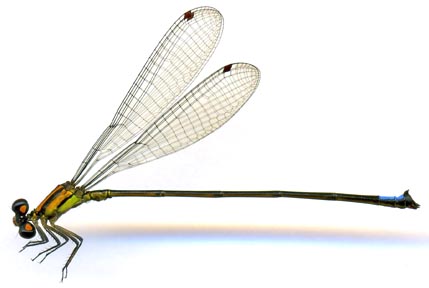
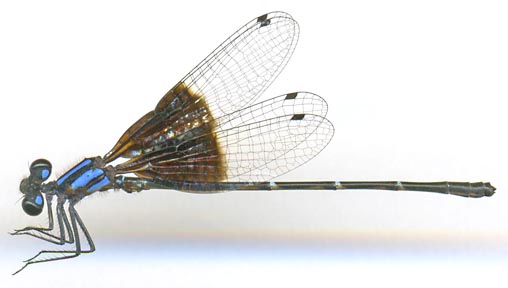

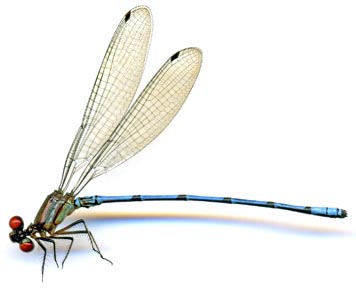
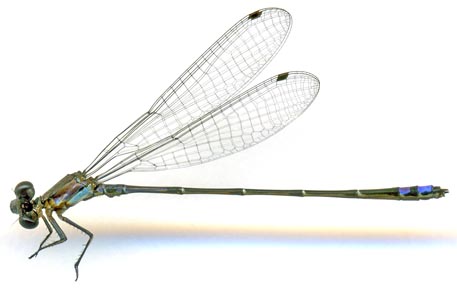
Dragonflies and Damselflies of Ecuador |
William Haber, Electronic Field Guide Project, University of Massachusetts, BostonDavid Wagner, University of Connecticut, Storrs |
| Introduction | References | Family Descriptions |
Coenagrionidae - Pond Damsels, Narrow-winged Damselflies |
| This the largest family of damselflies in Ecuador with 17 genera and more than 100 species. Most are small, ranging from 21 - 48 mm in length. All rest with their wings folded together above the body. The wings are transparent or tinted yellow to brown, but are strongly marked only in Acanthallagma. Stigmas are not much longer than wide. Males of most species are black, marked with blue or green; some are largely red-orange marked with black or blue (Telebasis). Females and immature males are usually similar in pattern to reproductive adults, but the pale colors are mostly dull beige or tan. The females of some species have two or more color forms, and it is typical for these to have a ground color in the teneral stage that is different from the adult (e.g., Anisagrion, Ischnura, and Leptobasis). The wings have two antenodal veins, and the anterior side of the quadrangle is shorter than the posterior. The appendages are distinctive and especially useful for distinguishing species. Recent DNA analysis suggests that the Pseudostigmatidae and New World Protoneuridae should be included within this family (Dijkstra et al., 2013). At present we have kept the traditional family arrangement because that is familiar to most people and still appears in most of the literature. |
 |
 |
 |
 |
 |
| Acanthagrion trilobatum, male | Acanthallagma caeruleum, male | Anisagrion inornatum, male | Argia limitata, male | Enallagma novaehispaniae, male |
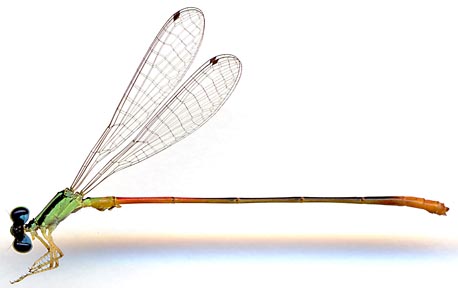 |
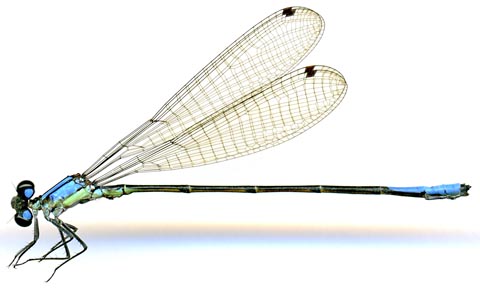 |
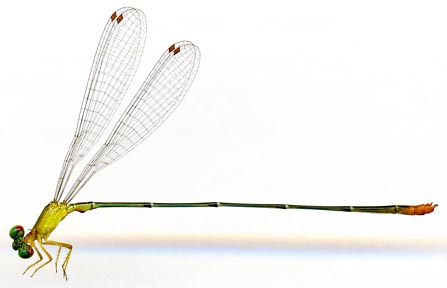 |
 |
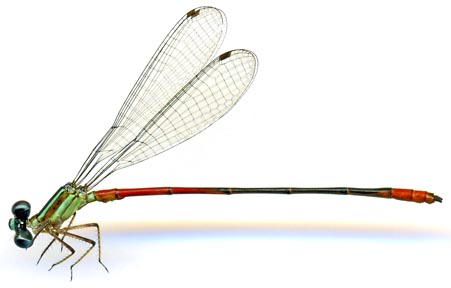 |
| Leptobasis vacillans, male | Mesamphiagrion ecuatoriale, male | Metaleptobasis knopfi, male | Oxyagrion tennesseni, male | Telebasis versicolor, male |
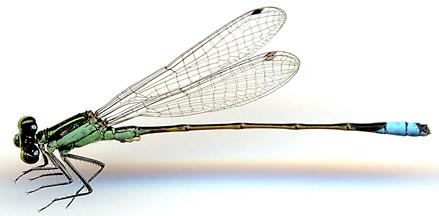 |
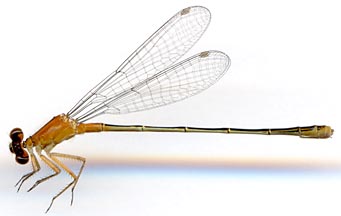 |
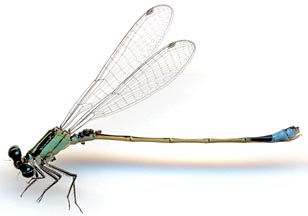 |
 |
| Ischnura ramburii, male | Ischnura ramburii, teneral female | Ischnura ramburii, mature female, male pattern | Ischnura ramburii, mature female, cryptic pattern |
| Text and images copyright 2014 by William A. Haber, http://efg.cs.umb.edu/ Created: 24 January 2006. Updated: 25 March 2014. |